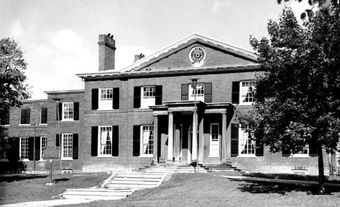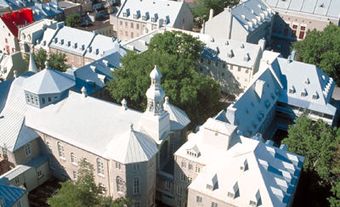Complexe Desjardins
Complexe Desjardins in MONTRÉAL is a multi-use building complex comprising four towers of varying sizes on a substructure and occupying a full downtown city block. It was designed by architects and planners, including Jean-Claude La Haye et associés, predecessor to Société La Haye-Ouellet, urbanistes et architectes; Blouin, Blouin et associés, architectes; Gauthier, Guité, Roy, Architectes; Ouellet et Reeves; and Longpré, Marchand et Goudreau, 1967-1976.
The idea for a multifunctional building to serve the needs of the entities that made up the Mouvement Desjardins was first launched in the 1960s. In 1967, urbanist Jean-Claude La Haye outlined a development project for an assembly of buildings housing administrative and commercial operations, which included a hotel. Construction work started in 1972. During this year, the Union régionale des caisses populaires Desjardins de Montréal, the Société de Fiducie du Québec, and the Sécurité, compagnie d'Assurances Générales du Canada (all three of which belonged to the Mouvement Desjardins) merged with La Sauvegarde, compagnie d'assurance sur la vie of the Desjardins group. Shortly thereafter, the government of Québec joined the consortium and made a significant financial contribution. Both public and private undertakings were thus included in the building program.
Complexe Desjardins is located in a city sector that had traditionally been associated with the francophone population of Montréal. Built in the decade following the Quiet Revolution (Révolution tranquille), the building has been referred to as a symbol of the advancement of French Canadians in North America. The firms involved in the project were of Québec origin, and the plans, specifications and reports were written in French. The north-south axis where Complexe Desjardins sits, between Place des Arts to the north and Complexe Guy Favreau to the south, has been compared in scale and importance to the axis formed by PLACE BONAVENTURE, PLACE VILLE MARIE and the Queen Elizabeth Hotel, located in an area that had been predominantly associated with Montréal's English-speaking population.
One of the objectives of the designers was to provide a meeting place sheltered from the sometimes inclement Montréal winters. The substructure contains underground passages to neighbouring structures. The large central interior plaza, surrounded by superimposed mezzanines, hosts diverse activities throughout the year and is illuminated by skylights and immense glass windows at both north and south entrances.

 Share on Facebook
Share on Facebook Share on X
Share on X Share by Email
Share by Email Share on Google Classroom
Share on Google Classroom




